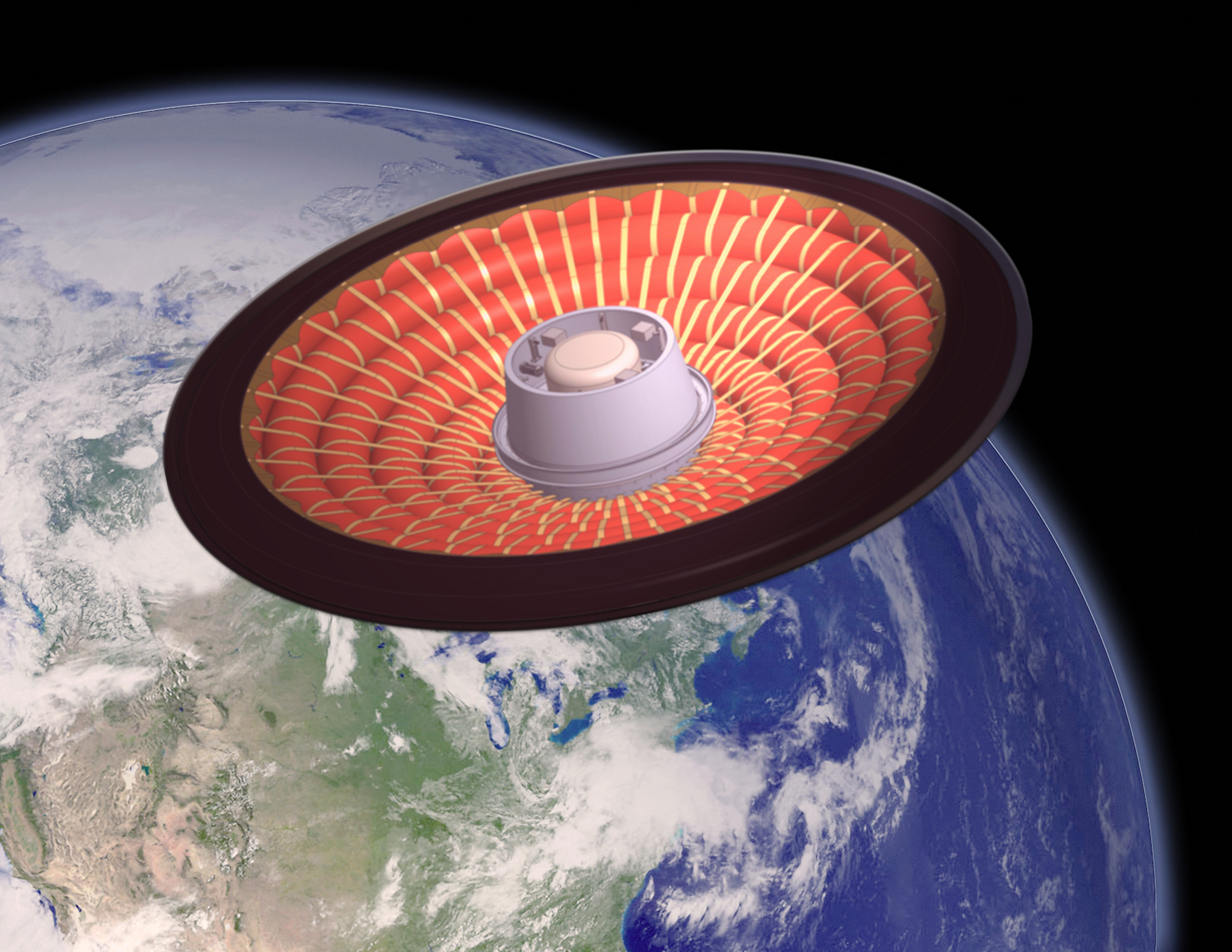The Low-Earth Orbit Flight Test of an Inflatable Decelerator (LOFTID) is demonstrating a cross-cutting aeroshell — a type of heat shield — for atmospheric re-entry. One of the challenges NASA faces is how to deliver heavy payloads (experiments, equipment and people) to destinations with an atmosphere, because current rigid aeroshells are constrained by a rocket’s shroud size. One answer is an inflatable aeroshell that can be deployed to a scale much larger than the shroud. This technology enables a variety of proposed NASA missions to destinations such as Mars, Venus, Titan as well as return to Earth.
When a spacecraft enters an atmosphere, aerodynamic forces act upon it. Specifically, aerodynamic drag helps to slow it down, converting its kinetic energy into heat. Utilizing atmospheric drag is the most mass-efficient method to slow down a spacecraft.
The atmosphere of Mars is much less dense than that of Earth, and provides an extreme challenge for aerodynamic deceleration. The atmosphere is thick enough to provide some drag, but too thin to decelerate the spacecraft as quickly as it would in Earth’s atmosphere. LOFTID’s large deployable aeroshell — an inflatable structure protected by a flexible heat shield — acts as a giant brake as it traverses the Martian atmosphere. The large aeroshell creates more drag and begins slowing down in the upper reaches of the atmosphere, allowing the spacecraft to decelerate sooner, at higher altitude, while experiencing less intense heating.
LOFTID is demonstrating a large aeroshell — 6 meters in diameter or about 20 feet — entry from low-Earth orbit, to demonstrate this technology in conditions relevant to many potential applications. The benefits of using the inflatable decelerator design for a variety of space applications include:
- Landing heavy payloads (mass)
- Landing at higher altitude locations (elevation)
- Enabling better utilization of the full volume of a launch vehicle fairing by stowing the aeroshell forward of the spacecraft at launch, rather than encapsulating it within a rigid aeroshell
The inflatable decelerator technology is scalable to both crewed and large robotic missions to Mars. Potential commercial applications include, in order of increasing scale (and payload dependent):
- Low-Earth orbit return; free flyer, in-space manufactured materials [3 to 6-meter scale]
- Unprecedented International Space Station down mass [8 to 12-meter scale]
- Lower cost access to space through launch vehicle asset recovery [12-meter scale]
The LOFTID project is a part of the Technology Demonstration Missions program within NASA’s Space Technology Mission Directorate. The project is managed by NASA’s Langley Research Center in Hampton, Virginia, in partnership with and United Launch Alliance.
Learn more:
- Inflatable Heat Shield One Step Closer to 2022 Demonstration
- Inflatable Decelerator Will Hitch a Ride on the JPSS-2 Satellite
Contact
Sarah Frazier
Headquarters
Washington D.C.
(202) 853-7191


























